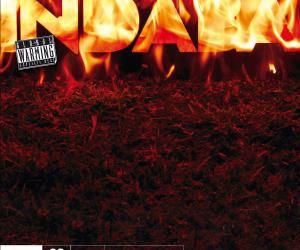First Published in
Almost one litre of oil is needed to produce half a square metre of carpet. However, that's not all: the entire life-cycle of carpets is one of the worst contributors to our carbon-emitting society.
Mostly made of petroleum by-products and synthetics, treated with toxic chemicals, and coupled with a vinyl backing and PVC padding, carpets are non-biodegradable and headed for the landfill at the end of their useful lives. From a health perspective, carpets are also one of the biggest contributors to indoor pollution and often require toxic chemicals in the cleaning process.
Aware of these negative features of carpets, the global carpet industry is becoming increasingly conscientious. International leader Interface, the world's largest manufacturer of commercial carpets, has set the precedent using as much as 80% post-consumer recycled content and offer a service whereby old carpets can be returned for recycling. The modular carpets also decrease the amount of carpet that needs replacing when only certain areas wear through.
To counter the reliance on crude oil, polylactic acid is also showing promising advances as a corn-based polymer intended to replace petroleum-based plastics. Although it has been around since the 1930s, it is still too expensive to meet the everyday demand of producing plastic bottles, film wrap, soft furnishings and clothes.
Skip the carpet
Still, the most sustainable eco-friendly approach is to make what you have last longer – service your wooden floor, maintain your carpet and get a finish for your concrete floor.
For South Africans living in old houses with wooden floors, Bernhard Lembeck's Envirotouch selection of biodegradable, natural paints and floor sealers offers a grand green solution. Using plant oils, gum resin and lead-free driers, the product is durable and eliminates toxic fumes in the home. The only local company producing 100% natural finishes, it further prides itself on using local raw materials and assisting rural communities in providing these materials.
When building new, recommended options include sustainably grown hardwood flooring, fair-trade bamboo, recycled rubber flooring made from chopped up old tires, and responsibly harvested cork. Although concrete is energy intensive to manufacture, it lasts long and has fantastic thermal mass that helps to moderate the temperature of a building – as long as it isn't covered with an insulating material such as vinyl.
Cat on a mat
Rugs and mats appeal more to the emotional value of sustainability and can be taken along when moving house. Wool is most commonly used, because of its durability and natural ability to repel liquids on contact. However, just because it's pure wool doesn't mean that it hasn't been chemically treated. Hemp, sea grass, jute, coconut husk and corn leaf fibre alternatives are increasingly becoming more accessible.
South African designer Mary-Ann Williams, who lives and works in Germany, uses environmentally certified wool in her felt carpets. "Wool is a natural, biodegradable fibre and is both renewable and recyclable. It has an inbuilt environmental advantage because it is a natural fibre grown without the extensive use of herbicides and fertilisers," reiterates Williams.
Further: the rugs are all handmade (reducing the impact of manufacturing); the left-over pieces are used in other designs, donated to schools or composted; personal interaction based on custom-made commissions increases the emotional value of the product; and the rugs are completely repairable because of the structure of small pieces. They are also fire resistant, sound absorbent and machine-washable to boot – one of Williams's own inventions.
Winner of numerous awards, including a 2006 ID magazine design award, Williams's variants of Flokati carpets seem named after pasta – Maltagliati, Pappardelle, Tagliatelle, Cappelletti and Sconcigli – referring to the size and shape of the individual pieces of felt. Having initially worked with felt as a hat designer in the 1980s, her exploration of the medium has extended beyond apparel and carpets, into the realm of lamps, accessories, bowls and even a shock-proof laptop bag.
Roll up the red carpet
As for those old eyesores destined for the landfills, what is done is not necessarily done. Carpet Burns has patented Heat Treated Carpet that transforms discarded carpets into a plywood-style sheet material that is waterproof, durable, hard wearing, low maintenance and non-porous. Its diverse indoor and outdoor applications range from flooring to furniture and surface coverings in both the domestic and commercial environment.
Also, some ingenious creatives are coming up with some exciting reapplications. Using carpet samples or pieces of old carpet, the recent Ample Sample competition finalists included loungers, handbags, wine coolers, room dividers, benches, tables, magazine racks and more














